Some of the links in this post may be affiliate links.
I love Hoyas in general, but Hoya obovata is definitely in my top favorites! It is a very easy going plant with thick, leathery, succulent oval leaves which are often speckled with white or pink markings. And after the plant is at least 2-3 years or so, you will be rewarded with beautiful clusters of pink flowers.
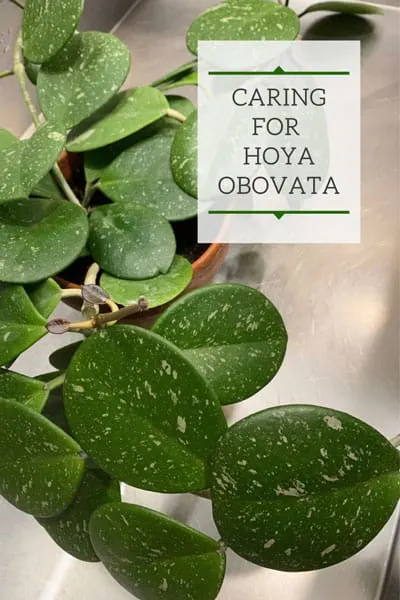
These drought tolerant plants are easy enough for the beginner, but satisfying enough for the seasoned grower as well. If there is only one Hoya that you can grow, make it this one!
Table of Contents
HOYA OBOVATA CARE
HABITAT
I always like to understand where plants are from because it gives us clues for care. Hoya obovata is found growing in India, Indonesia, Thailand and Fiji.
It is considered to be an epiphyte and is found growing along tree trunks and branches of their host trees.
In the home, you can grow these plants with a support of some kind (such as training around a circular wire hoop), or you can grow it as a hanging basket, or as a trailer off of a plant shelf.
1. LIGHT
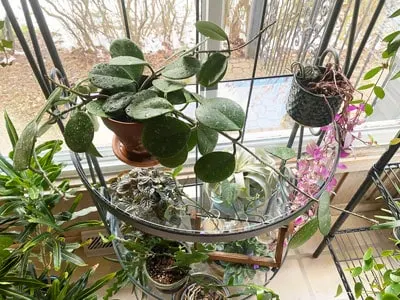
These are not low light plants by any means, so be sure to provide good light for your Hoya for best growth, especially if you want yours to bloom!
I would recommend at least a half day of direct sun for this plant for good results. An Eastern or Western window location would suit this plant. Southern exposure with full sun will even work as long as you pay attention to the moisture needs!
My own plant currently grows in the corner of a north and east facing set of windows in my sunroom, so it gets direct morning sunshine. It is placed within a foot of the window.
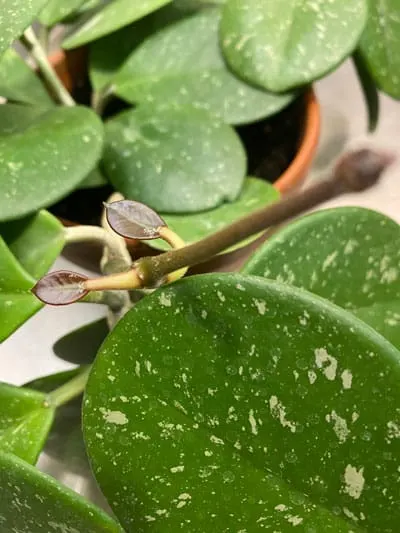
2. WATERING
Hoyas in general are easy plants to grow and will tolerate drought. I have my obovata growing in a terra cotta pot, which I love for Hoyas because they can get awkward and heavy, so the extra weight will keep them more stable.
Here are some watering tips for your Hoya obovata:
- I allow my soil to dry either completely or almost completely. How do I gauge this?
- Use your finger to feel the soil. Allow at least the first inch or so of the potting soil to dry out before watering your plant again. Your plant can safely tolerate completely drying out but don’t let it stay completely dried out for too long.
- Don’t use a moisture meter! These things are dangerous, junky and will lead you to damaging your plant. I’ve known many people that have killed their plants because they used one. Read my blog post on Soil Moisture Meters for Indoor Plants: 3 Big Dangers.
- You can learn what your pot feels like weight-wise after you’ve watered and also after the soil has dried out completely. Over time you may learn when your plant needs water just by picking up your plant and seeing how much it weighs. I would still feel the soil to be sure though.
- Water thoroughly. Always soak the soil completely, let water drain out of the drainage hole, and discard any excess water. I like to bring my plant to the sink and give it a thorough watering and also rinse the leaves to keep them clean.
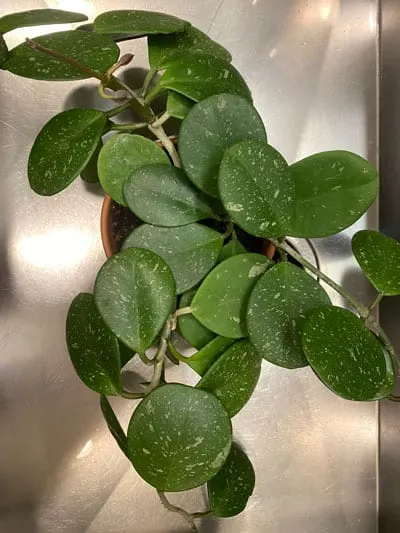
3. POTTING MIX/SOIL
Hoya obovata likes a very well draining soil. Remember these are epiphytes in nature, so they prefer mixes with very sharp drainage.
I recommend using the following mix and I purchased my components from Amazon:
2 parts of a good succulent/cactus soil such as Espoma Organic Cactus Mix
mixed with
1 part of either perlite or 1/4″ pumice
I prefer pumice for Hoya, but you can use perlite too. This mixture results in a potting mix that retains enough moisture, but is very well drained and will dry out in a reasonable time. Your obovata will love it!
For a step-by-step guide with photos, be sure not to miss my Hoya repotting guide.
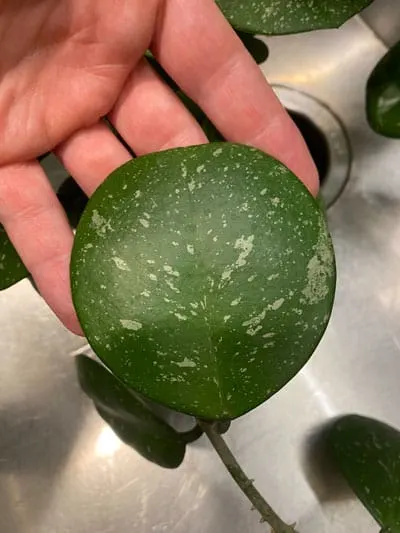
If you want an amazing mix to use right out of the bag, check out the amazing Hoya soil blend from Oh Happy Plants. This is an amazing mix and you will get 10% off at checkout automatically if you use my link.
4. FERTILIZING
This is one of the faster growing Hoyas, and you really must fertilize regularly for best growth! I like to fertilize dilutely with every watering, and I withhold fertilizer during the winter months.
I’ve been using an incredible fertilizer called Dyna-Gro Grow. It is a premium, complete fertilizer that contains all the micro and macro nutrients for plant growth.
There is a noticeable differences in my plants since I’ve started using this fertilizer so try it out for yourself! You will not be disappointed.
Simply mix 1/4-1/2 teaspoon of Dyna-Gro Grow to a gallon of water and use at every watering.
Most people forget that most potting mixes for houseplants are “soilless” and intrinsically contains no nutrients at all. Your potting soil may have some fertilizer added to it, but that will be depleted after a few months and you really need to fertilize for best results.
This fertilizer is amazing and you can use it for most of your houseplants.
5. FLOWERING
I’d like to show you the progression of the flowers, from the time the flowering spur (or peduncle) initially emerges, to when it is fully open. Then I will get into some tips of HOW you can get your Hoya to bloom.
When the peduncle first start to grow, here is what it looks like.
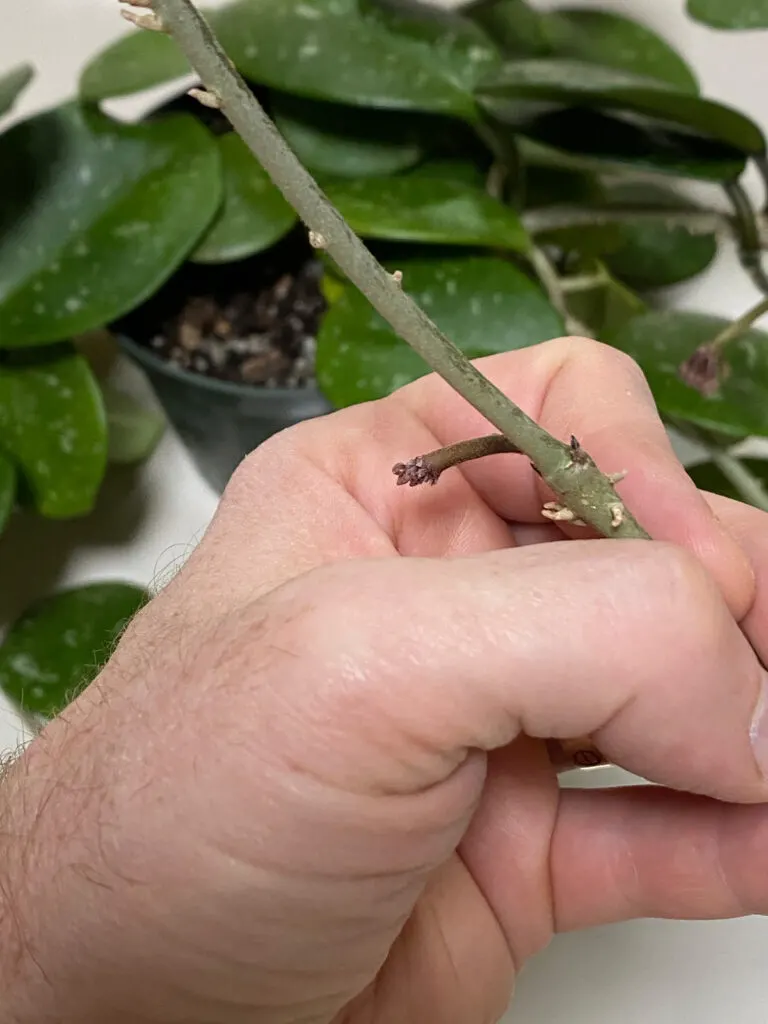
After it has grown a little more, it will look like the following.
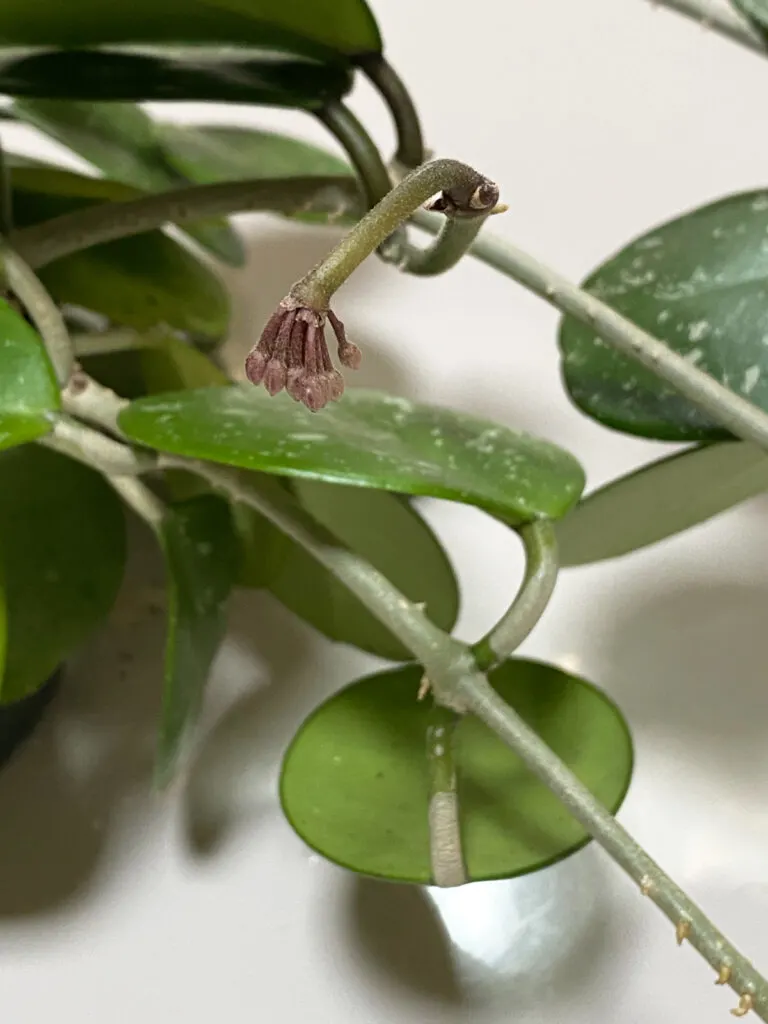
It will then continue to grow more until it looks like this.
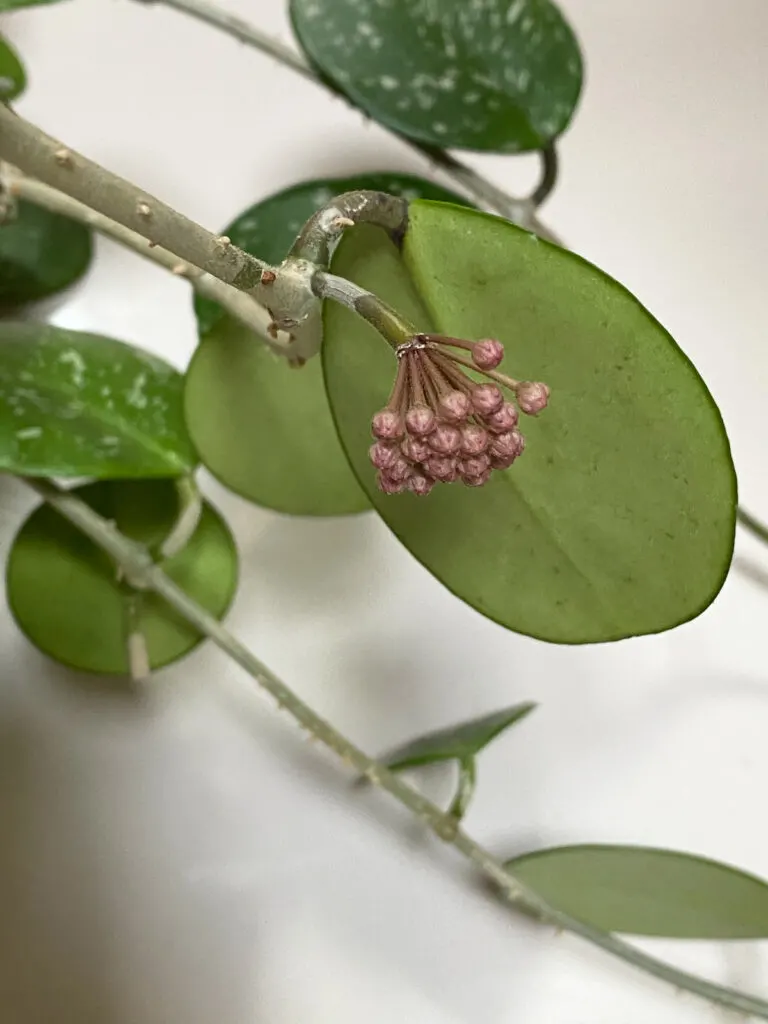
Finally, here is one flower cluster that has fully opened.
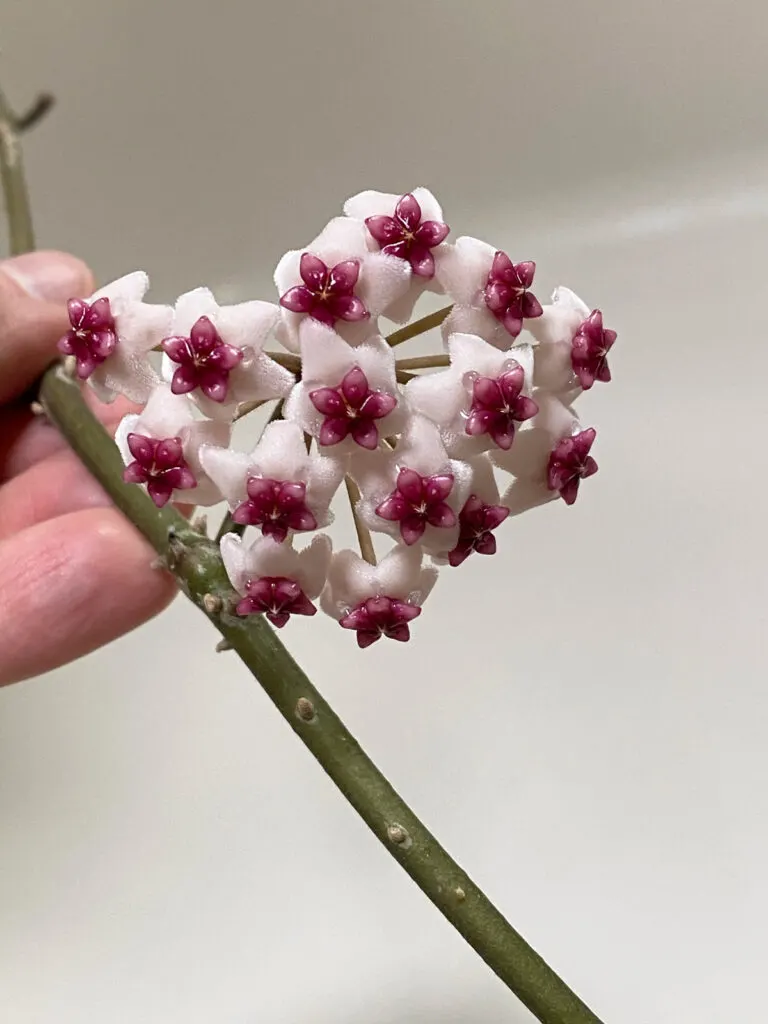
Here are some tips to get your Hoya obovata to flower:
- Light is paramount! Follow my light suggestions or your plant just won’t bloom without enough light.
- Keeping your Hoya obovata potbound will help encourage blooming. Don’t overpot your Hoya.
- Your obovata will need to be at least 2-3 years old typically before it will bloom.
- Once your plant blooms, do NOT deadhead the flower! Your plant will rebloom from the same spur in future years.
- A dry period in the winter of about 4-5 weeks or so will help to bring your plant into bloom.
6. PROPAGATION
There are so many ways to propagate, and I received my Hoya obovata cuttings from a friend by mail.
The cuttings were a few inches long and I simply rooted them in water. Plain and simple! Once they had roots, I potted them up. You can also root in soil, and I will go over that shortly.
When preparing a cutting, whether you are water or soil propagating, here are some tips from the International Hoya Association:
- Take a cutting that has 2 or 3 leaf nodes. The node is the point on the stem where the leaf meets the stem. Remove the leaves at the bottom node or two. You do want to keep at least a couple leaves at the tip of the cuttings.
You will also notice that your cutting might have aerial roots on the stem. If you have these, your cuttings will most likely root more quickly.
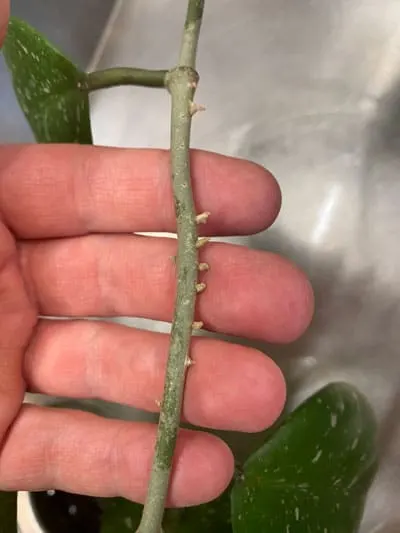
WATER PROPAGATION
If you are water propagating, just place the cuttings so that the nodes where you removed the leaves are under water. Change the water once a week to keep the water fresh.
After your roots in water are 1/2 an inch or so long, go ahead and pot them up in soil. Don’t leave your cuttings too long in water if you can help it.
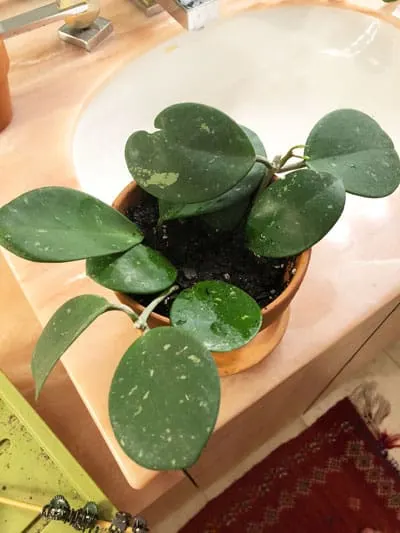
SOIL PROPAGATION
Once you’ve prepared your cuttings, dip the base of the cutting in water and then rooting hormone, and then insert directly into a small pot with the Hoya soil that i described earlier.
I like to use Garden Safe Rooting Hormone that you can easily purchase on Amazon.
Water thoroughly. Don’t allow the potting mix to dry out completely while the cuttings are rooting. You may also want to increase humidity while your cuttings are rooting.
That’s all folks! Do you have a Hoya obovata? Comment below. I’d love to hear from you!
If you want to read about other Hoyas, check out my posts on:

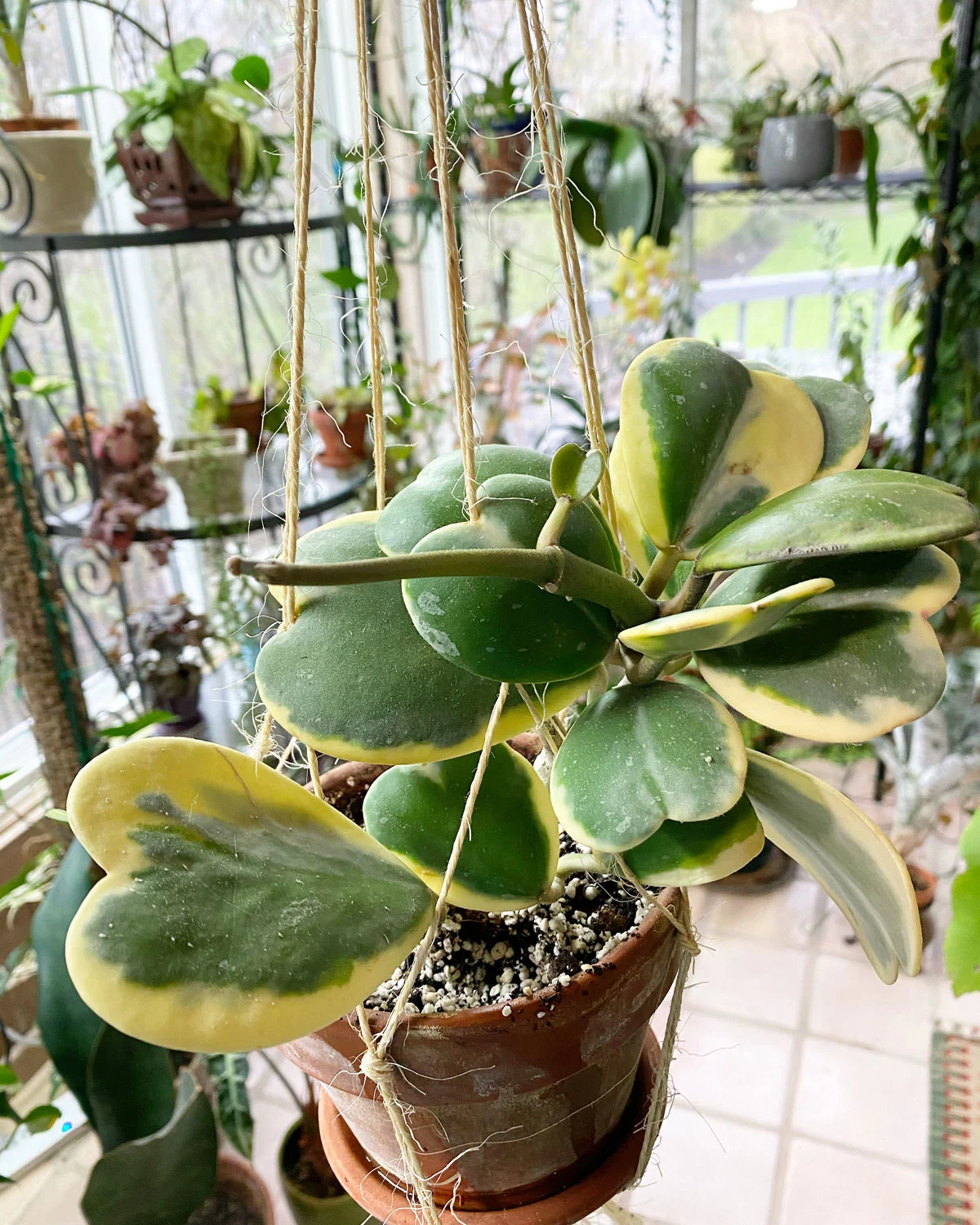
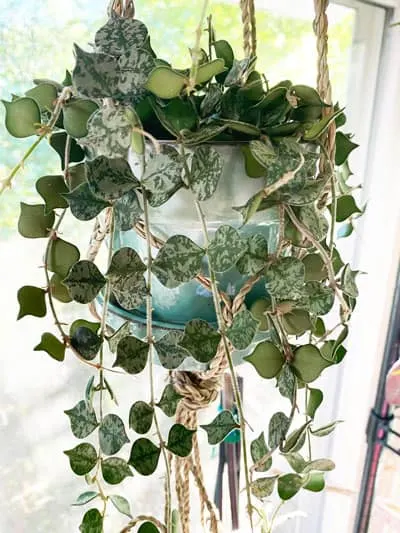
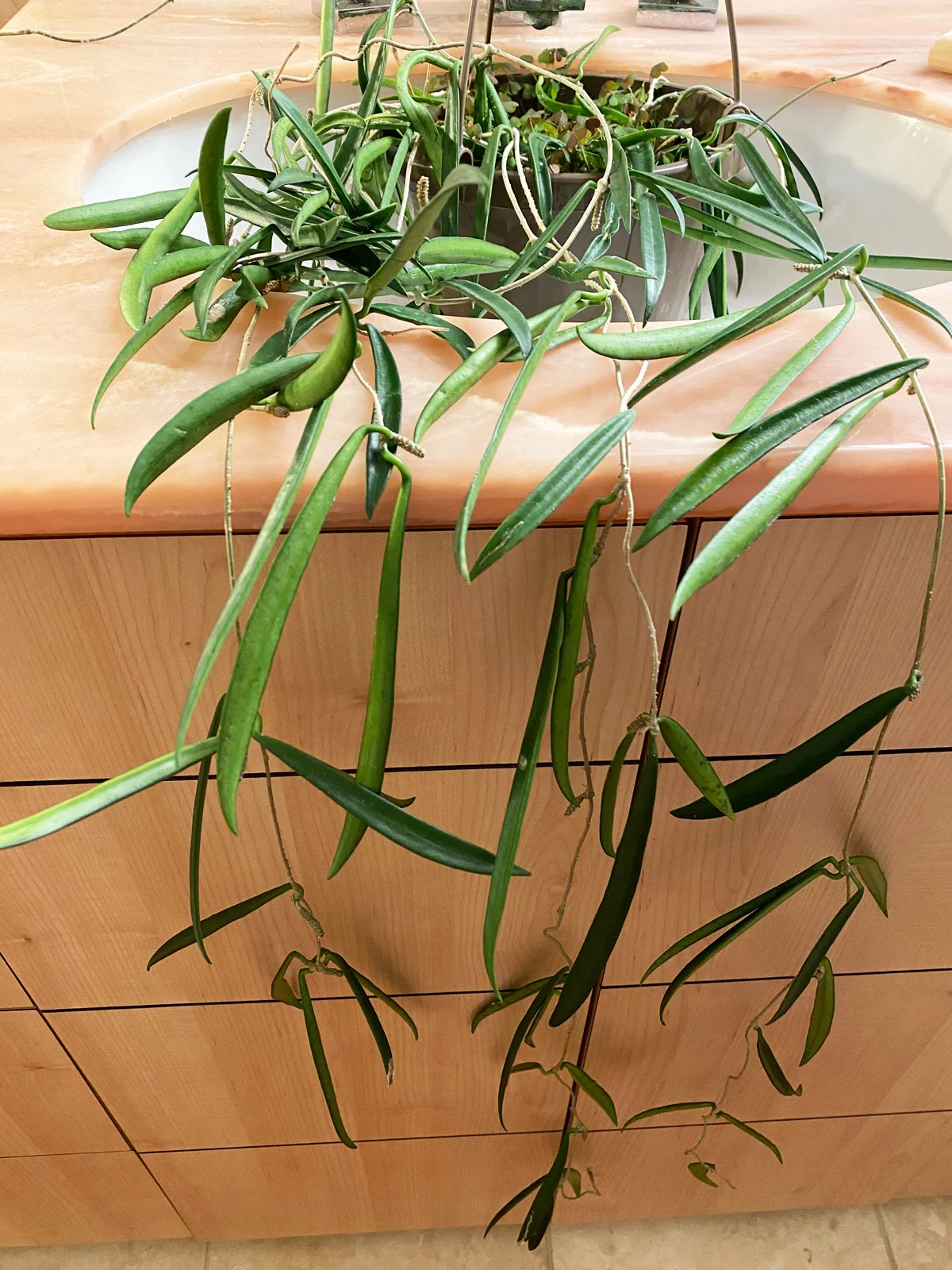
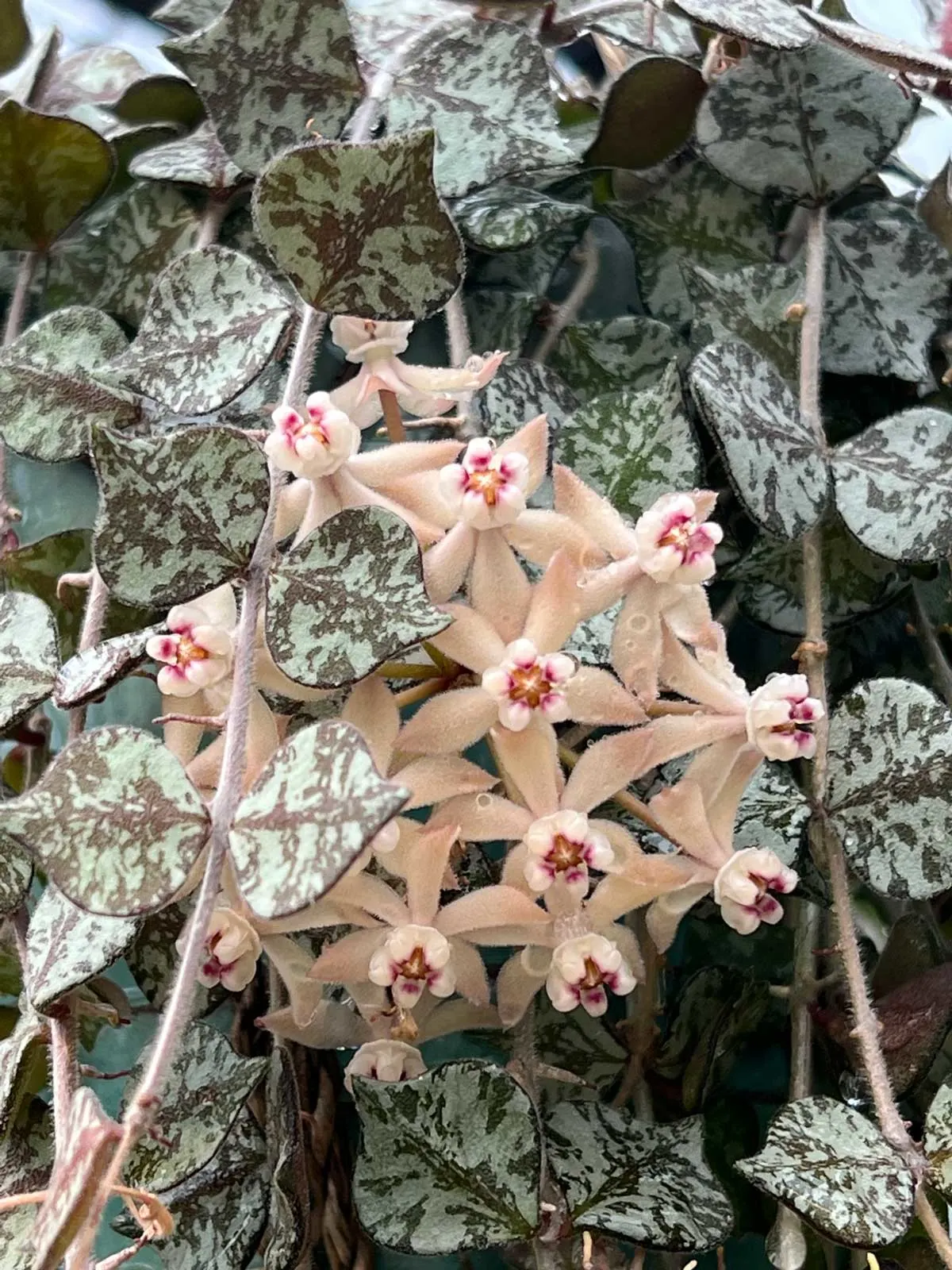
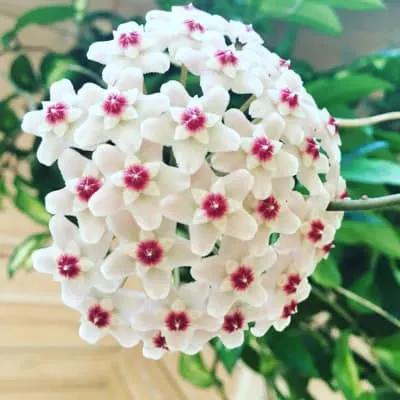
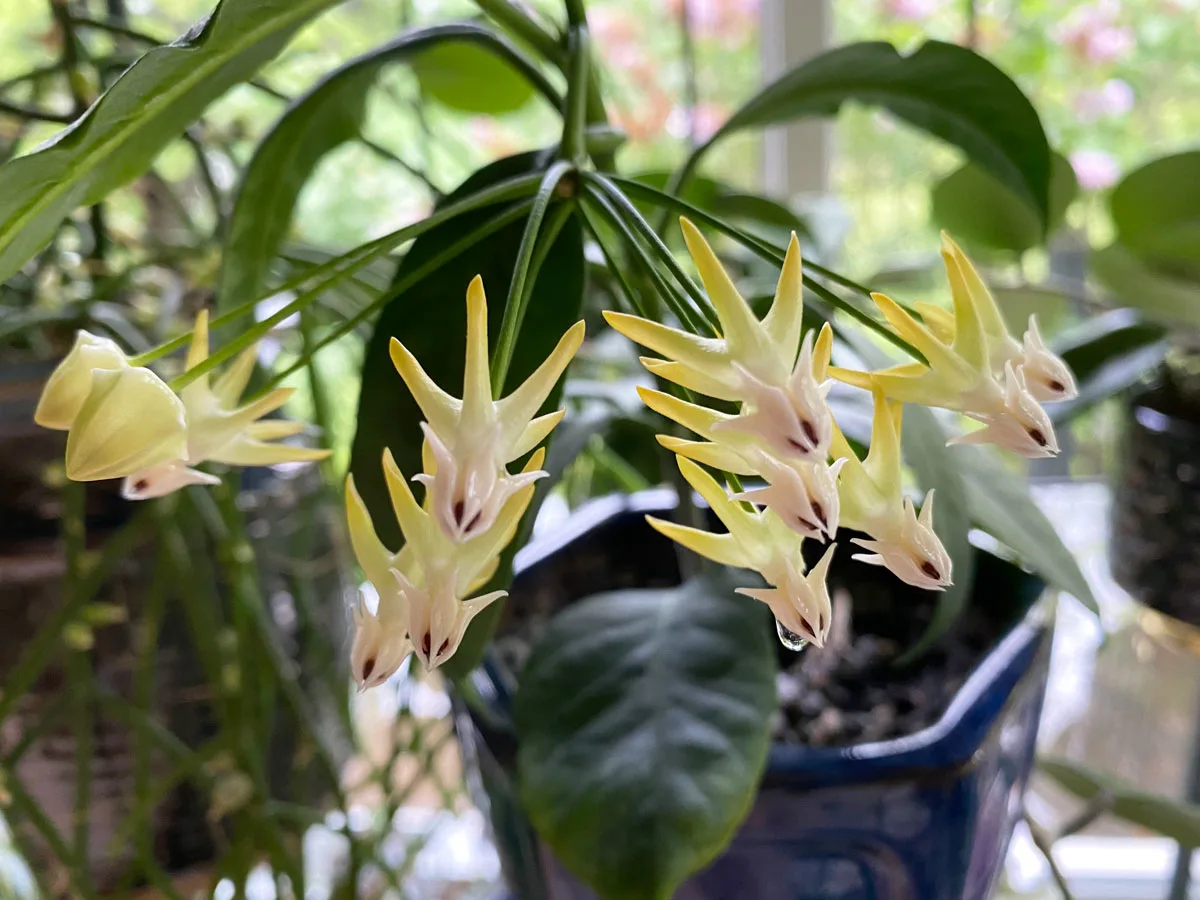
Viola
Monday 8th of April 2024
Mam kilka gatunków hoya, obovata też. Kupiłam ją zimą ☹️, trochę stała, ale teraz już widać, że zaczyna rosnąć. Kocham hoje, szczególnie te o dość dużych liściach (Carnosa z odnianami, Australis z odnianami, pubicalyx) , są bezproblemowe (chyba, że za bardzo się rozrosną...).
Terez Taylor
Monday 27th of March 2023
I’ve read that hoyas are fertilizer sensitive (I have a rope hoya and just got an obvata). I have a 3-2-1 food from Arber, I might try that?
Raffaele
Tuesday 28th of March 2023
I've been using Dyna-Gro Grow on all my plants for years and I've had zero issues. It is urea-free and will not burn. I use 1/4-1/2 teaspoon per gallon at almost every watering. Sometimes I get lazy! I'm not familiar with Arber. Is it an organic fertilizer?
Christina
Wednesday 21st of December 2022
Hi Raffaela, I have a cutting of the hoya obovata from my grandparents (given to me by my parents) and it is still very healthy and growing and once or twice a year it gives me a flower. And I gave a cutting to my two sisters and also my daughter, so it really has become our favorit family-plant. And if one of us gets a flower we think of it as a present from our (great)grandparents. Kind regards, Christina from Holland.
Raffaele
Wednesday 21st of December 2022
I love plants with stories! :-) And what a wonderful way to remember your grandparents.
Bev R
Friday 19th of November 2021
My Hoya Obovata grew really well, produced a flower and the stem continued to grow another foot with no leaves and then stopped. Plant seems to be doing well but not progressing. It has been this way for months. Suggestions?
Raffaele
Saturday 20th of November 2021
The stems will appear to be bare at the tips at first, so that is completely normal. They will fill out with leaves later. It could just be slowing down because of less light this time of year. That's my best guess without knowing any further details.
Janet Valliere
Monday 26th of July 2021
I hav two oboists cutting rooted October of 2021. Roots are healthy and leaves look good , but I can’t get them to put out new growth. What’s my problem?
Raffaele
Tuesday 27th of July 2021
Hi Janet! I assume you meant 2020? Where do you have your plant situated (what kind of light is it getting?). Sometimes they take a bit to get going, so be patient. If you don't have your plant directly in front of a window or under a good grow light, this is the most important factor. Are you doing anything differently from what I describe in my post?